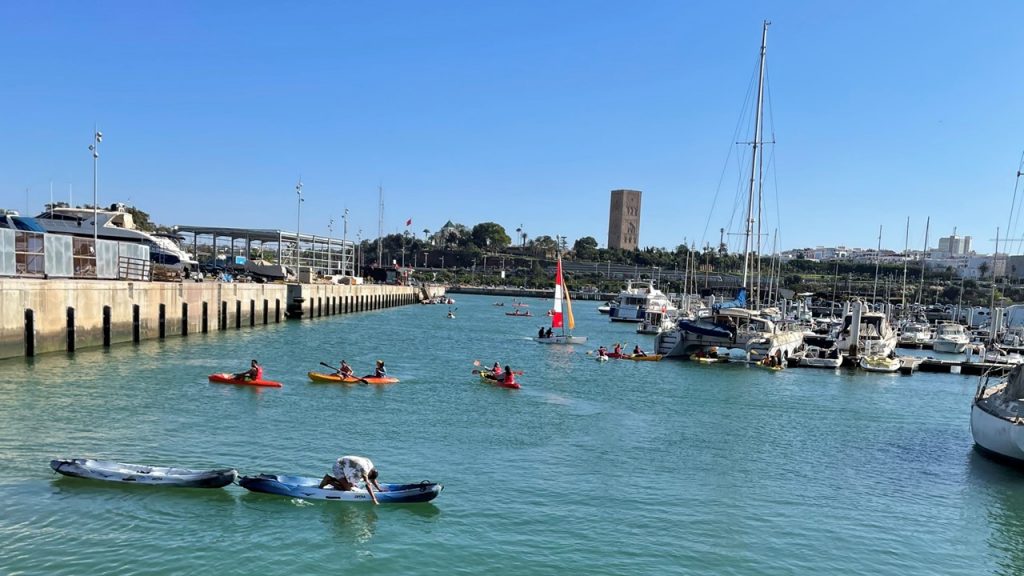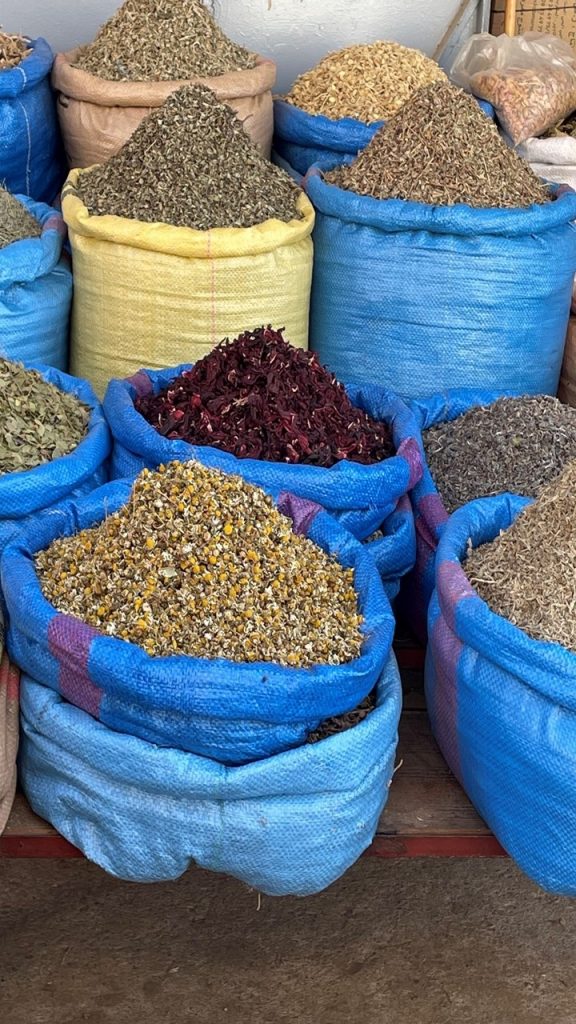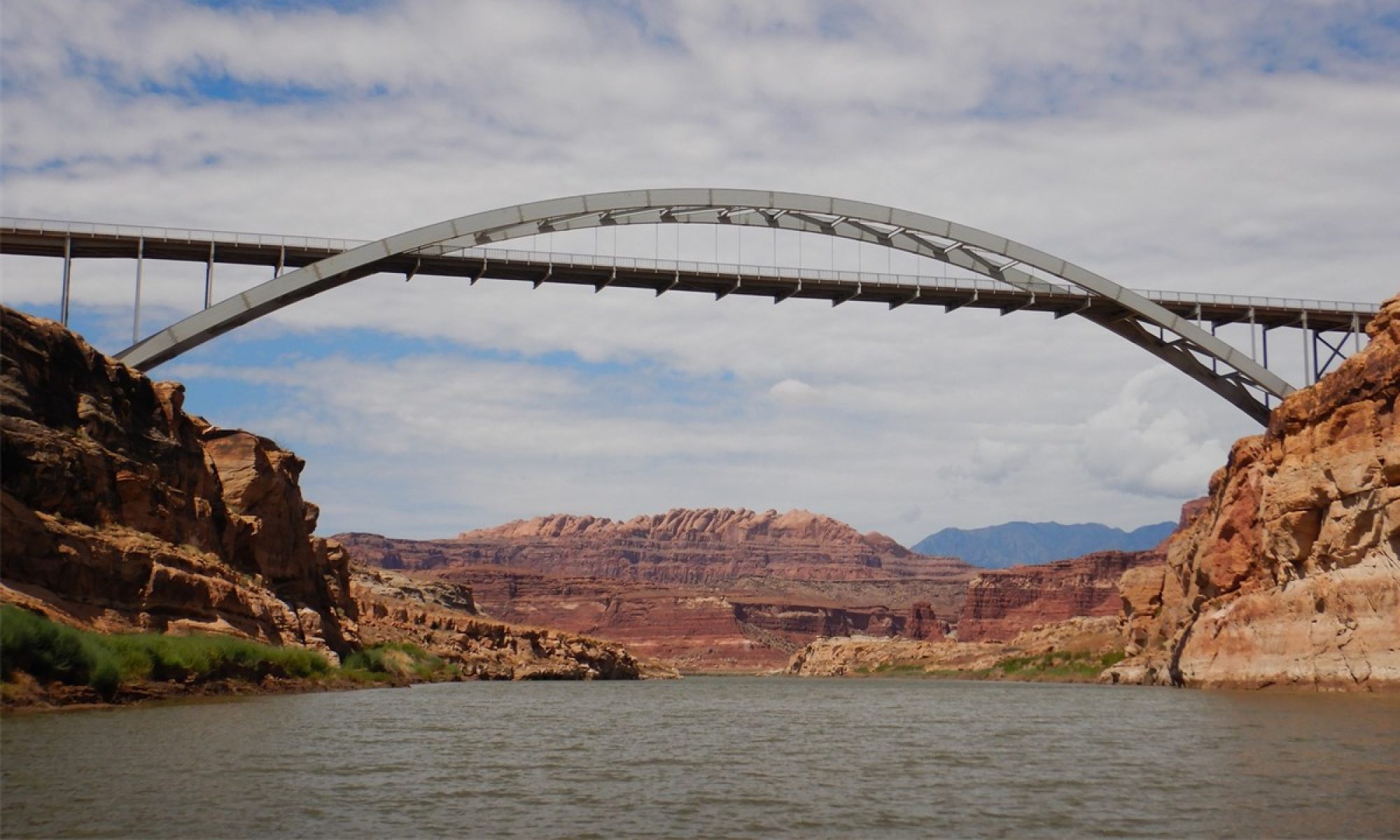Part 1: Rabat & Sale’
August-September 2021
It was Friday when we left our home in Alexandria, Virginia to finally begin our adventure to the exotic land of Morocco. We had originally scheduled this trip in 2019 for travel in 2020, but the Covid-19 Pandemic had deferred the trip until now. We were skeptical up to the last minute that the trip would even “go” as the U.S. Department of State raised the Security Advisory for Morocco to Level 4 just a few days before our departure, and then one person of our travel group was a late cancel, leaving our group size at only 5 individuals. We had spoken to our Moroccan Trip Leader, Mohamed Ait Alla, and he had assured us that all was ready, and so we boarded the D.C. Metro train, transferred to the Silver Line Express, and arrived at Dulles Airport for check-in with Air France. The overnight flight to Paris was smooth and uneventful, and the transfer to an Air France flight to Casablanca at Charles de Gaulle was quick with a minimum or security and vaccination checks. We arrived in Casablanca and met the rest of our group – a couple from Kansas City, (Clark and Jacque), and Clark’s sister from Wisconsin, (Debi). The five of us were greeted by Samir, and we boarded a small bus for the 2-hour ride north up the coast from Casablanca to the city of Rabat, Morocco’s capital since 1913. Here, we checked into Hotel Le Dawliz located on the opposite bank of the Bouregreg River in Rabat’s sister-city, Sale’. There we were met by the Vice-President of the Travel Company from London, and the Moroccan Representatives, as well as Mohamed, to welcome us as one of the first tourists from America since the pandemic began. Our room overlooked the hotel pool and the river, with views of the Hassan Tower, the Royal Mausoleum, and the Grand Theatre located on the opposite bank. The Grand Theatre and Opera House was designed by Zaha Hadid to be in the shape of a cobra with its large flat head readily apparent from above. It is the largest theatre in all of Africa. After freshening-up, we all met for a fish dinner and learned a bit about each other, before retiring to get ready to the next day.
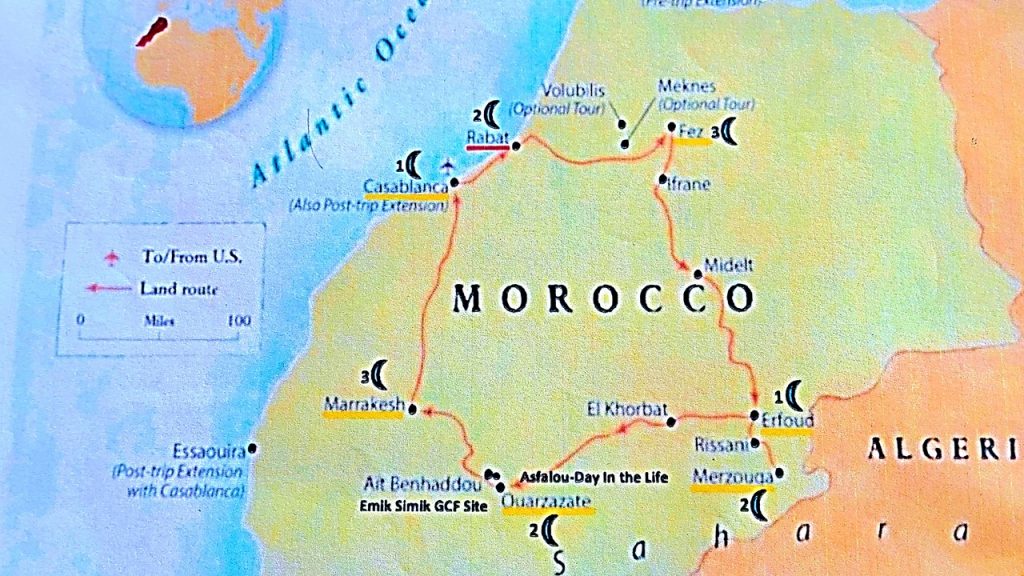

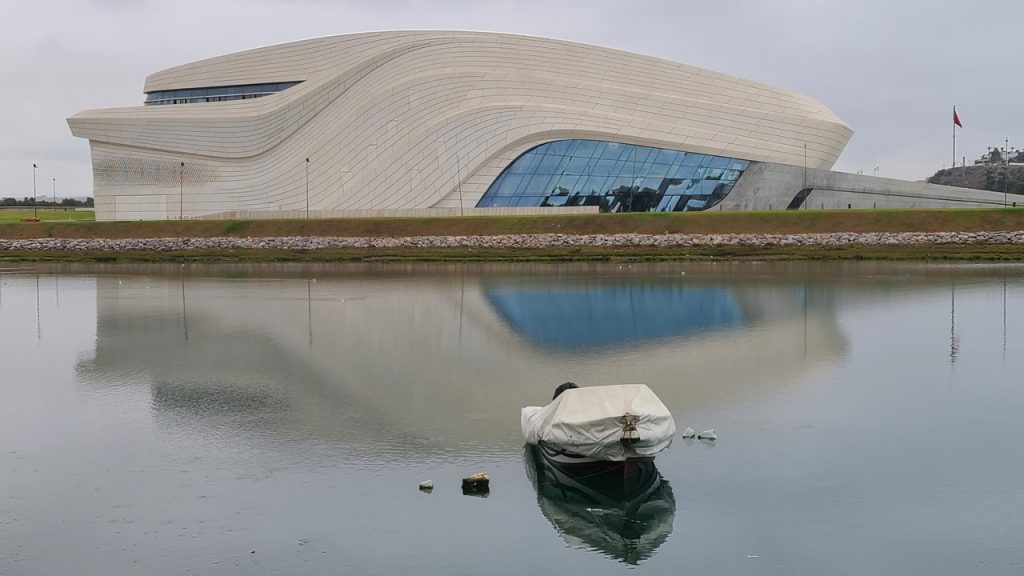
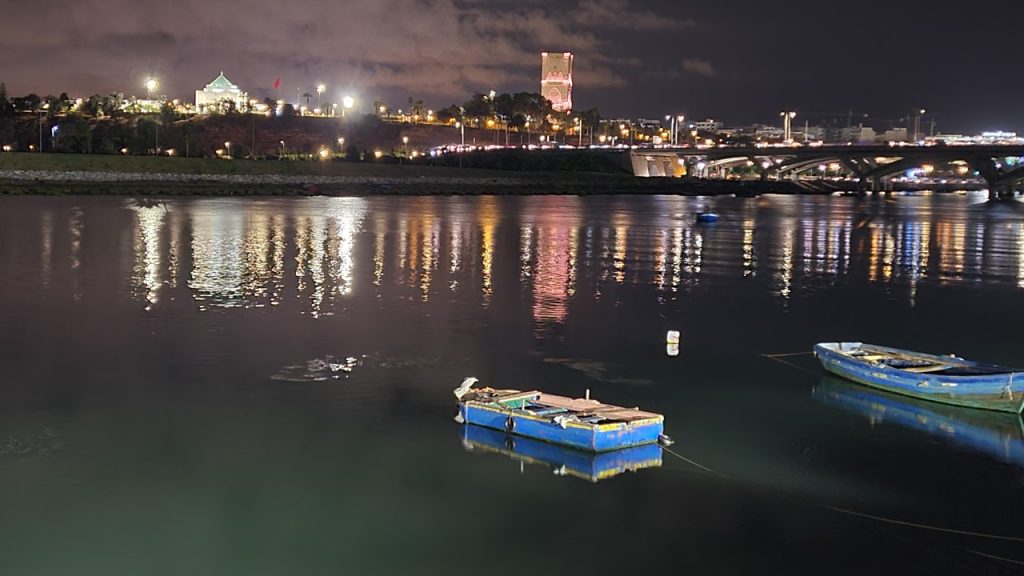
On Sunday, we met for breakfast at 7:30am and then received our trip briefing from Mohamed. After the briefing, we boarded our bus for a quick tour of Rabat. First, we visited Dar al-Makhzen – the Royal Palace in Rabat which is the King’s principal residence. The King, Mohammed VI, however, prefers the smaller and relatively secluded Palace of Dar es Salaam, further out of center of the city, and maintains the Dâr-al-Makhzen only as his official and administrative residence Since he was not there, we were able to walk across the parade grounds, view the extensive gardens, and see the collection of uniformed guards representing each branch of service. The King of Morocco has 12 palaces around the country, all maintained continuously ready for his potential visit. After that we stopped by Hassan Tower & the Mausoleum for Mohamed V. Then, we drove to Kasbah El Oudayas, built in the 12th-century, which was the capital of the greatly feared Barbary Pirates.
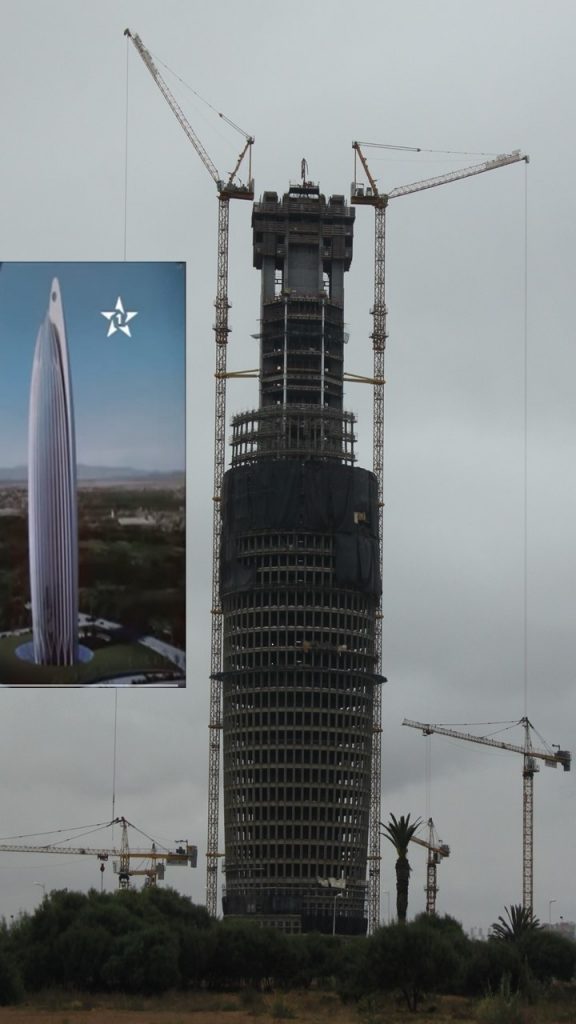

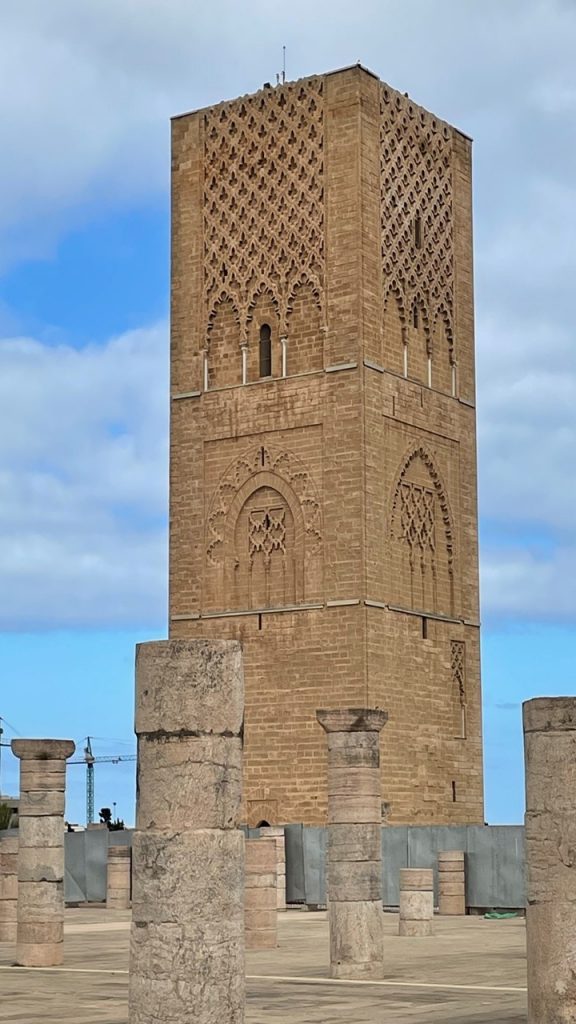

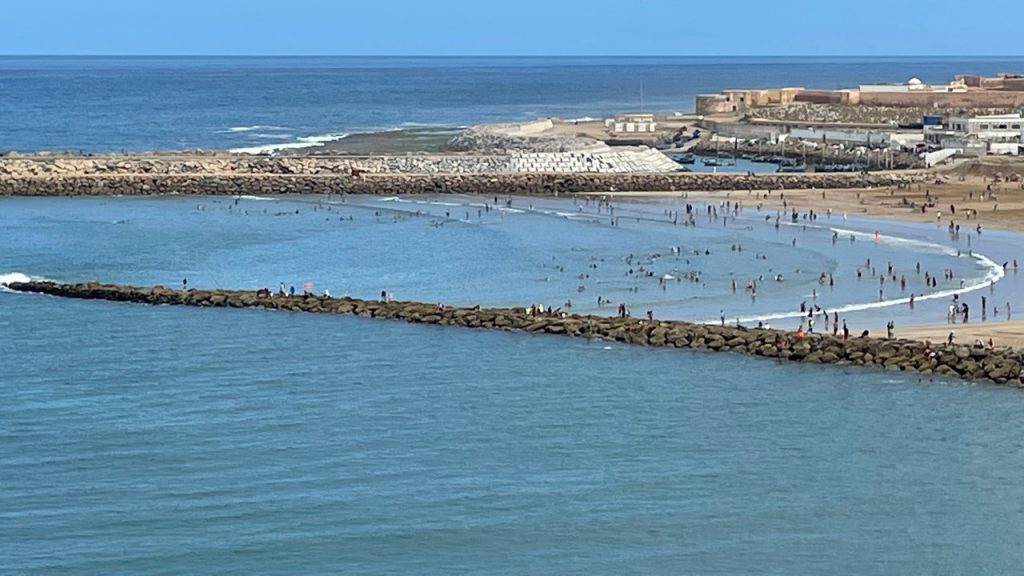
A Kasbah is a citadel of a North African city, typically a walled section in the older or native quarter of the city. Kasbah El Oudayas is located at the Atlantic coast where the Bouregreg River meets the ocean. From there, the views of the beaches were fantastic. Inside the Kasbah, residents live in their historic family dwellings with shops and artisans throughout. We stopped and sampled the local bread as it came out of the brick oven that was on its way to the local market. From there, we went to Pietri Square, to a shop run by refugees from Sub-Saharan Africa and met with Celia Omondiale, a Nigerian victim of human trafficking, left homeless, penniless, pregnant, and unable to speak the language in this foreign country with the broken promise of a better life in France. In Morocco, without proper documentation, she cannot receive any government assistance, and her child cannot attend public school. They are excluded from Moroccan society and rely on the assistance and generosity of others to survive. Because of its close proximity to Europe, Morocco is a popular place for refugees and immigrants who try to make their way across the Straits of Gibraltar. The influx of sub-Saharan refugees into Morocco, and the stress it is placing on the nation’s already-strained social services is a huge national problem for Morocco. Morocco is a nation of about only 36 million people, but an estimated over 700,000 immigrants currently live in the country. As the number of undocumented immigrants grows, so does the problem of how to accommodate them in a nation already struggling with poverty and unemployment. In 2020, Morocco’s jobless rate rose to 12.3%—the highest it’s been since 2003—leaving immigrants and citizens alike to compete for limited resources and ratcheting up the tension between the two segments of the population.
Upon returning to the hotel, we decided to take a walk and explore the medina of Sale’ – a locale that featured traditional shops and families living their everyday lives. From there, we wandered past the local mass-vaccination center to the Bouregreg Marina, where locals were enjoying kayaking and a wide range of water sports. Through financing and by order of the King, Morocco’s Covid vaccination rate exceeded 92% at this time, (and reached over 99% by September 18th)! Upon returning to our hotel, we enjoyed the pool and prepped for dinner. That night, our “Welcome” dinner was in a restaurant called Dinarjat, located in Rabat’s medina – the traditional, old, non-European part of any North African town. Dinner was a feast starting with seven different salads and meat-filled pastries, followed by rice-stuffed zucchini, green peppers, potatoes, and tomatoes, with a dessert of deep-fried filo-dough, layered with almonds and whipped cream.
